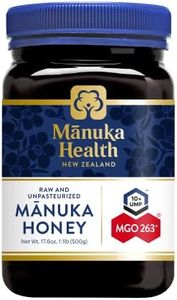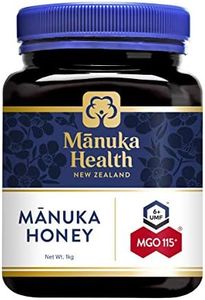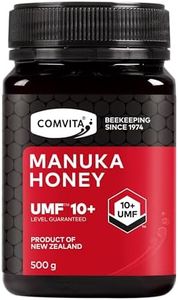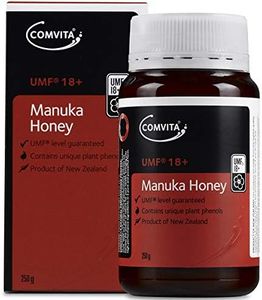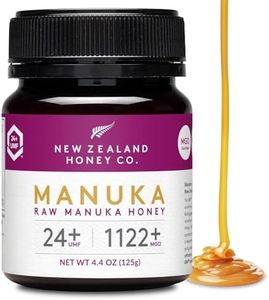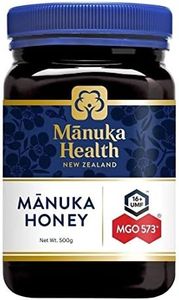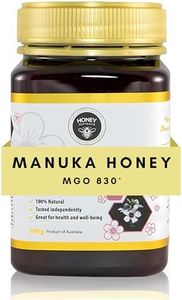We Use CookiesWe use cookies to enhance the security, performance,
functionality and for analytical and promotional activities. By continuing to browse this site you
are agreeing to our privacy policy
10 Best Raw Honeys
From leading brands and best sellers available on the web.By clicking on a link to a third party's website, log data is shared with that third party.
Buying Guide for the Best Raw Honeys
Choosing raw honey can seem simple, but there are a few important details to consider to make sure you get a product that fits your taste and needs. Raw honey differs from regular honey in that it is not pasteurized or heavily processed, allowing it to retain more natural flavor, enzymes, and nutrients. The best approach is to think about how you plan to use the honey—whether it's for sweetening teas, baking, spreading on toast, or for health benefits—and to learn how to interpret the labels and choices available.Source and Floral VarietyThe source of honey refers to the type of flower nectar that bees use to make it, and this affects both flavor and color. For example, wildflower, clover, manuka, and acacia are some common types. Lighter honeys like acacia tend to have a mild taste, making them good for sweetening without overpowering, while darker honeys like buckwheat or manuka are bolder and richer, which can be great for recipes or eating straight. To pick the right one, think about whether you want a subtle or strong honey flavor and how you’ll use it most—lighter for tea and yogurt, darker for strong flavor accents or potential health benefits.
Texture and CrystallizationRaw honey comes in different textures—liquid, creamy (sometimes called spun or whipped), or crystallized. Texture can change over time, since raw honey naturally crystallizes as it ages. This is a normal quality and not a sign of spoilage. Some people prefer creamy or crystallized honey for spreading on toast, while liquid honey is preferred for mixing into drinks or drizzling. If you want long-lasting smooth honey, look for creamy options or learn to gently warm crystallized honey to return it to a liquid state.
Purity and AdditivesCheck if the honey is labeled as 'raw' and 'pure,' meaning it hasn't been mixed with syrups, sugars, or other additives. Some products might have flavorings or be blended with other sweeteners. Pure raw honey should list nothing but honey in the ingredients. If you want the most natural product for health or taste, always go for pure, unblended honey.
Processing and FiltrationRaw honey is minimally processed, which means it might contain bits of pollen, wax, or propolis from the hive. More heavily filtered honey is clearer and smoother but may have fewer beneficial components. People seeking honey mostly for health reasons often look for less-processed types, while those wanting a smooth, consistent texture might prefer filtered varieties. Decide whether clarity or natural content is more important for your use case.
Origin or LocalityWhere the honey is produced can affect its flavor and quality. Local honey, sourced from your region, often carries flavors unique to local plants and may support local beekeepers. Some people choose local honey in hopes of allergy relief, although evidence is mixed. If you value supporting local agriculture or want a honey that reflects your area's flora, look for local producers; otherwise, famous international honeys might be interesting for their reputation and taste.
CertificationsCertifications such as 'organic,' 'non-GMO,' or 'fair trade' might appear on honey labels. Organic honey is made from bees foraging in pesticide-free environments, which may appeal to those wanting more natural or environmentally friendly choices. Certifications can give you extra confidence in how the honey is produced, so if environmental impact or organic methods are important to you, look for these labels.




